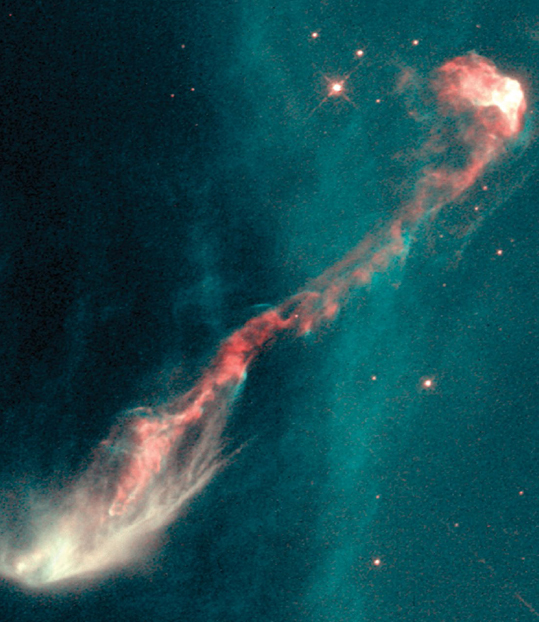c. 4.6 Billion BCE
Violent Proto-Sun
Star birth, like childbirth, can be a rather intense and messy event that involves a lot of energy. Even before they get hot and dense enough to start nuclear fusion of hydrogen into helium, newly forming protostars can emit huge amounts of energy as they gravitationally contract during their 100-million-year gestation period. Some of these baby stars funnel their energy into solar system–size jets of gas, dust, and charged particles, possibly collimated and heated by strong magnetic fields from the star, or from material falling in from the associated nebular disk, or both.
Astronomers have identified many examples of violent jets of material being emitted from very young protostellar objects, often called T Tauri stars after the prototype example. In fact, the star T Taurus is very much like what astronomers believe the young Sun was like, suggesting that our own star went through a similar short and violent period of intense jetting and other high-energy activity before it started to stably fuse hydrogen and settle down into its long, relatively quiescent life on the so-called Main Sequence.
Evidence for whether the Sun went through such a violent early T Tauri phase may be preserved in some of the solar system’s oldest materials: the ordinary chondrite meteorites. These rocks, which occasionally fall to Earth, are the oldest-known solids in the solar system, and they help to determine the age of the Sun and the timescale for the formation of the planets. These meteorites often contain large percentages of chondrules—small spheres of mineral grains that were once molten droplets of rock before cooling and accreting into larger grains, planetesimals, and asteroids. The source of energy for chondrule melting in the early solar system is unknown, but one possibility is high-energy outbursts and jets from the young Sun.
The deeper and more accurately astronomers peer into space, the more evidence they find for jets and disks around newly forming stars, suggesting that these features are a crucial part of star formation. A violent youth may be a normal, essential part of the life cycle of a typical star.
SEE ALSO Meteorites Come from Space (1794), Main Sequence (1910), Nuclear Fusion (1939).
A young T Tauri–like protostar is embedded in a cloud of dust in the lower left of this Hubble Space Telescope photograph. Called HH-47, it is emitting a spiraling jet of ionized gas and dust 1.2 trillion miles (2 trillion kilometers) long into space (from lower left to upper right).
